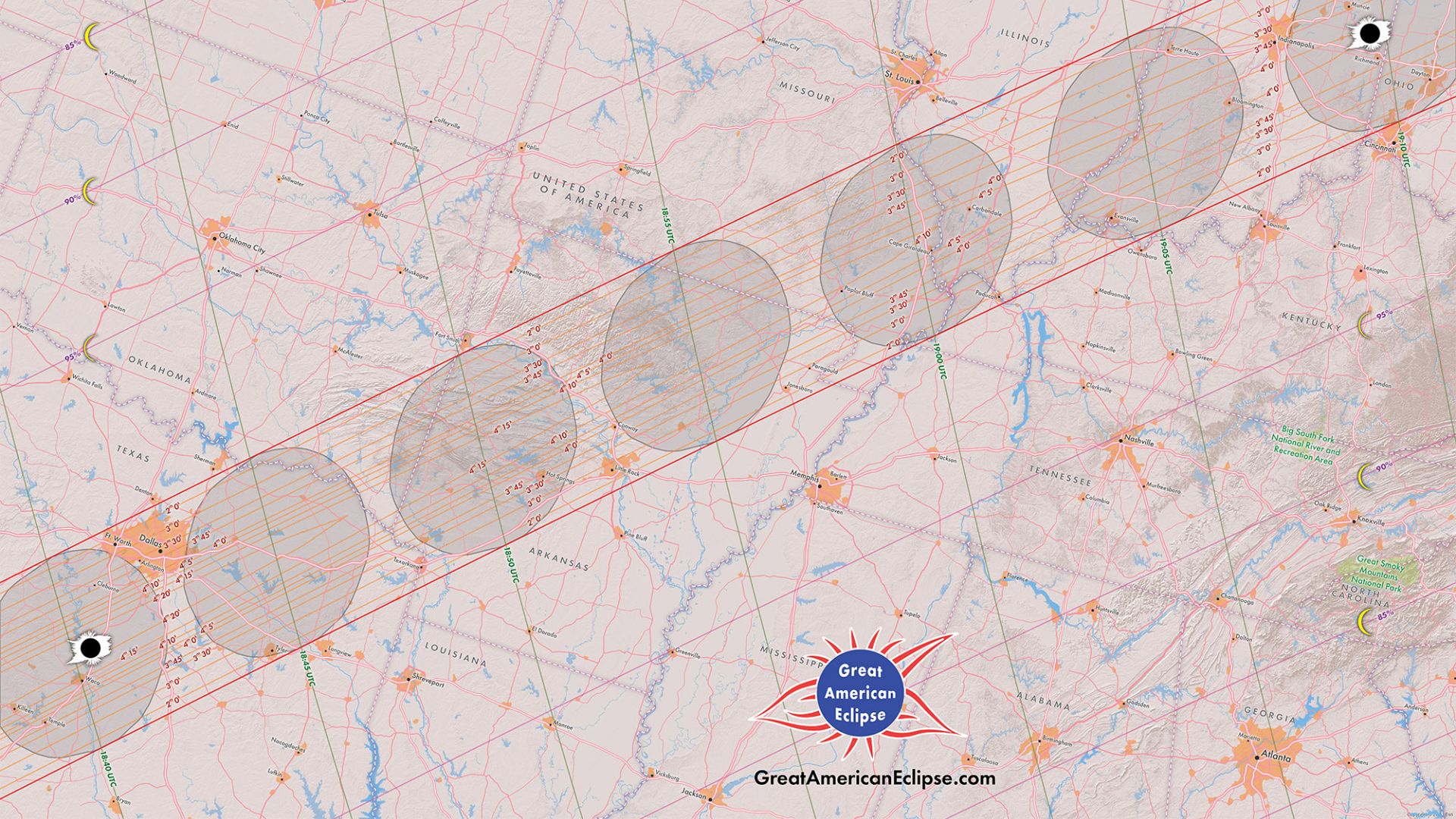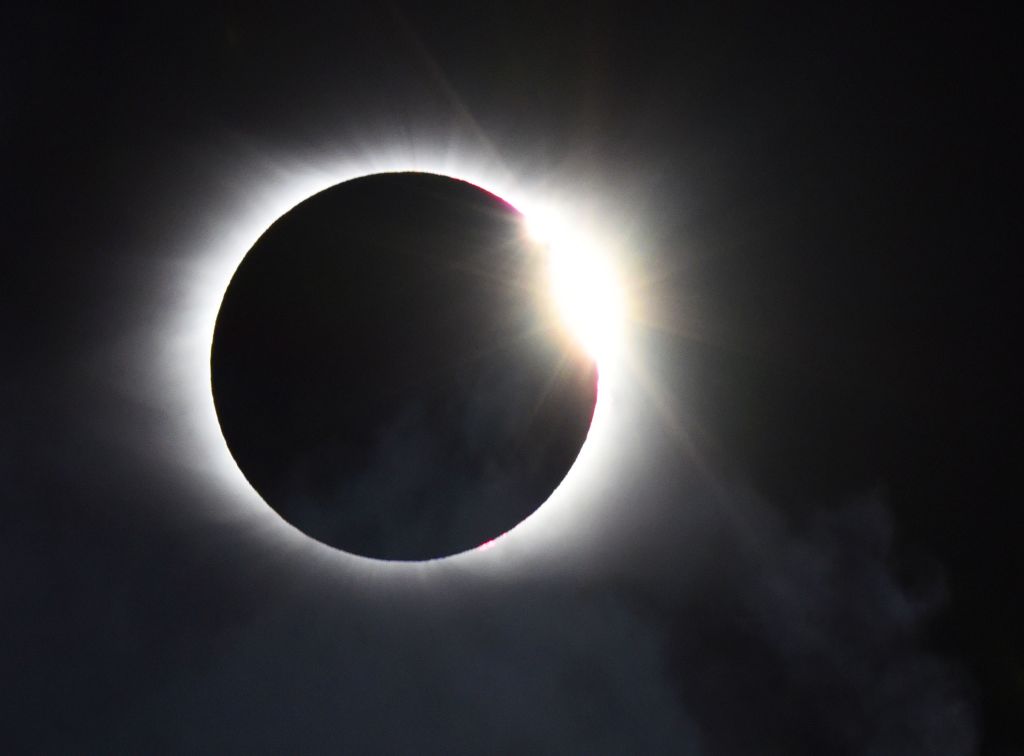Why you don't need to get to the centerline for April's total solar eclipse — and what will happen at the edge
If you understand the importance of the path of totality, then you may be heading for the centerline, but there are lots of reasons not to.

North America's total solar eclipse is coming on April 8, 2024, and plans are being made.
Almost everyone in the continent will see a partial solar eclipse, with the moon taking a chunk out of the sun over a few hours, with only those who live or travel into the path of totality having a view of the sun's corona during darkness in the day.
It also matters where you are within that path. On average, it will be 115 miles wide (185 kilometers) as it crosses northern Mexico, parts of 15 U.S. states and five Canadian provinces, but those at the center and those at the edge will have a different experience.
Related: Total solar eclipse live updates
How the path of totality works
The path of totality — the moon's shadow as it crosses the sun — will track from southwest to northeast. The longest totality is 4 minutes 28 seconds in rural Mexico when the solar eclipse will be at its highest in the sky. The maximum totality will decrease in duration as the path of totality moves northeast.
Still, wherever you are, this fact remains: the closer you are to the centerline of the path of totality, the longer totality will last. "You've got these two circles — the bigger moon overlapping the smaller sun," said Dr. Tyler Nordgren, an Ithaca, New York-based astronomer, author of Sun Moon Earth and eclipse artist at Space Art Travel Bureau, in an interview with Space.com. "If you're standing at the edge of the path of that circle, there's only a tiny moment when the sun is completely covered." Conversely, if you're on the centerline, the entire diameter of that circular shadow takes longer to move across you. So, totality lasts the longest.
Do not stand right on the edge
"The edge is a weird place," says Nordgren. Being right on the edge of the path of totality is risky because totality can dwindle to nothing. That's because the edges of the path are not flat. The edges of the moon's shadow are a projection of its terrain, bringing great risks. "If there happens to be a crater or a valley on the edge of the moon, then you will not experience totality at all," says Nordgren.
Breaking space news, the latest updates on rocket launches, skywatching events and more!
"You will see Bally's beads and perhaps a diamond ring, but there will not be a moment at which it is completely black." Even half a mile can make a massive difference—you're either in the shadow or not.
This is not a live issue during most total solar eclipses because most eclipse chasers head into the path in remote areas. However, for this eclipse, some cities are dissected by the edges of the path of totality. For example, the CBD of San Antonio misses out on totality, as does Austin's airport, while only the northern suburbs of Columbus, Ohio, will experience totality.
Why avoid the centerline?
Although you need to avoid the edges of the path of totality, there is no need to obsess about the centerline.
The closer you get to the centerline, the less difference it makes in duration. Given that crowds will go to locations right on the centerline, it makes sense to go somewhere just shy of it. You may sacrifice a few seconds of totality, but that does not matter.
"We have a saying around the planetarium," Olivier Hernandez, Director of the Rio Tinto Alcan Planétarium in Montreal, told Space.com. "Totality always feels like it lasts eight seconds, no matter how long it lasts."
Besides, totality during America's last total solar eclipse in 2017 topped out at 2 minutes 40 seconds, which is typical. "I am not one of these people that has to get to the centerline of the path of totality," said Nordgren, who has better advice. "Number one, just be in the path of totality, and number two, be where it's clear."

Jamie is an experienced science, technology and travel journalist and stargazer who writes about exploring the night sky, solar and lunar eclipses, moon-gazing, astro-travel, astronomy and space exploration. He is the editor of WhenIsTheNextEclipse.com and author of A Stargazing Program For Beginners, and is a senior contributor at Forbes. His special skill is turning tech-babble into plain English.

